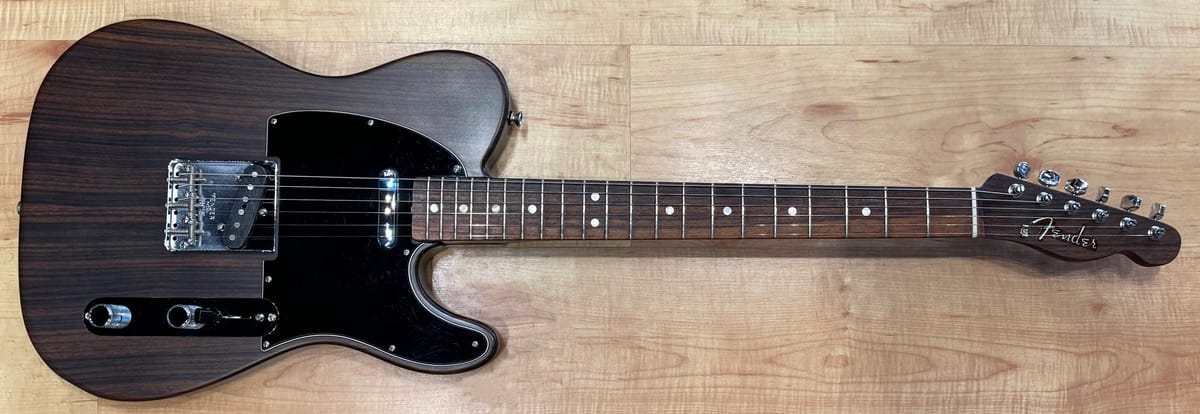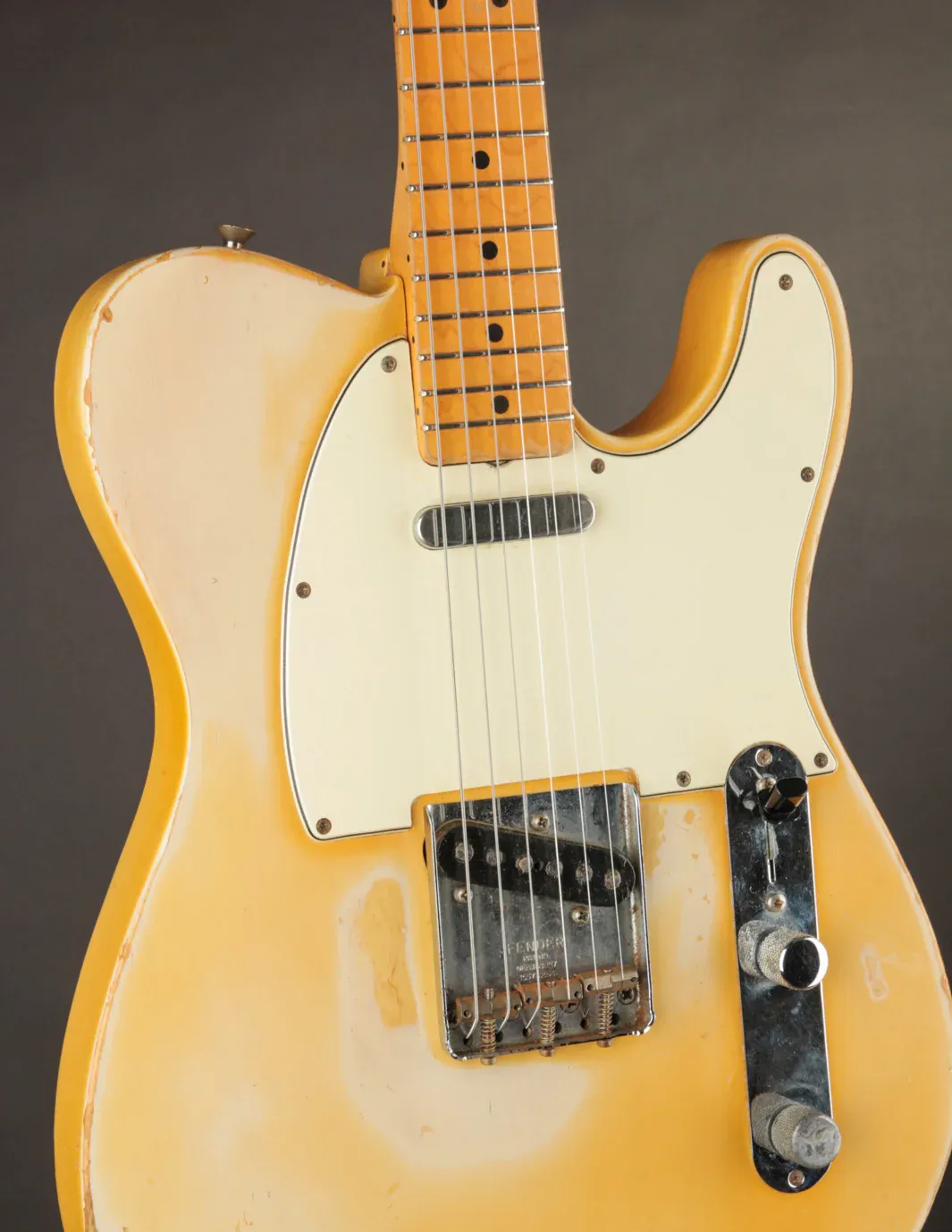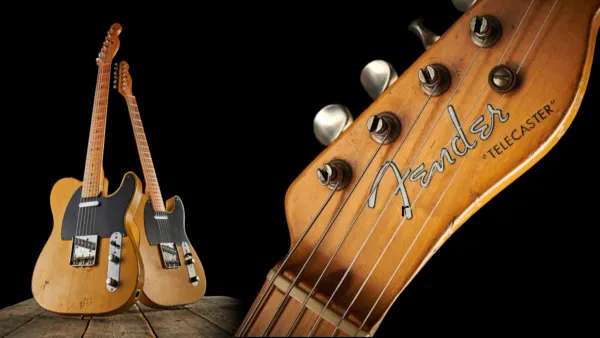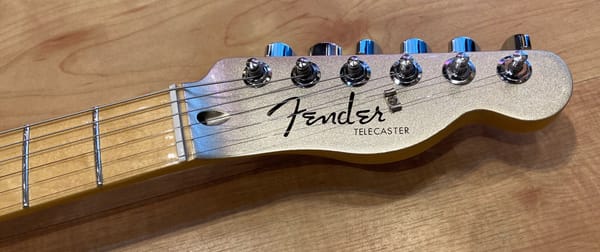The Telecaster’s Soul: George Harrison, Modern Masters, and the Rosewood Dream

The Telecaster’s story doesn’t end with mass production and market dominance. If anything, the guitar’s mythology deepens as it enters the hands of legendary players and adapts to the ever-shifting landscape of music. In this final part of our series, we focus on one of the most iconic Telecasters ever made—the rosewood model played by George Harrison—and explore how the Telecaster has continued to evolve, inspire, and reinvent itself from the 1980s through today.
The Rosewood Telecaster: Built for a Beatle
In 1968, Fender wanted to impress George Harrison of The Beatles with a custom-built Telecaster. The project was spearheaded by two of Fender’s most visionary luthiers, Roger Rossmeisl and Phil Kubicki. What they created was something extraordinary: a Telecaster made entirely of solid rosewood for both the body and neck, with a thin maple center seam to reduce weight. The guitar was sleek, heavy, and utterly unique.

This rosewood Telecaster was presented to Harrison and quickly became part of Beatles history. Most famously, it was played during the legendary rooftop concert in January 1969—The Beatles’ last live public performance. It also appeared throughout the “Let It Be” sessions, its darker tone and striking appearance making it instantly recognizable.
Though only a handful of original rosewood Teles were ever made, the instrument became a coveted icon. It symbolized the fusion of craftsmanship and celebrity, a guitar built not just to play music but to make history.
Beyond the Beatles: Telecasters in the Hands of Masters
While Harrison’s rosewood Tele remains legendary, countless other artists have forged their own paths using Telecasters. Each player found something different in its simple silhouette and powerful sound.
- Joe Strummer (The Clash): The Telecaster became a punk symbol in Strummer’s hands. His battered 1966 model—plastered with stickers and worn to the wood—represented the no-frills, anti-establishment ethos of punk rock. With just a few chords and a wall of attitude, Strummer proved the Telecaster didn’t need finesse to make an impact.
- Prince: Prince’s iconic “Hohner MadCat” Tele-style guitar became a staple of his performances. Though not a Fender-branded instrument, its Telecaster shape and configuration played a crucial role in defining his tone—bright, funky, sharp. Prince pushed the guitar into pop and funk stratospheres, delivering blistering solos and groove-heavy rhythms.
- Brad Paisley: In modern country, no one embodies the Telecaster like Brad Paisley. His custom models—lightweight, vintage-styled, and packed with hot pickups—serve as a masterclass in tone and technique. For Paisley, the Tele is not just an instrument—it’s an extension of his voice.
- Graham Coxon (Blur), Jonny Greenwood (Radiohead), Jim Root (Slipknot/Stone Sour): The Telecaster has even made its way into British alt-rock and American metal. From angular riffs to ambient soundscapes, these players expanded what the Telecaster could do.
Return to Craftsmanship: Post-CBS and the Custom Shop
Following mounting criticism during the CBS era, Fender was eventually sold in 1985 to a group of employees led by Bill Schultz. One of their first actions was the creation of the Fender Custom Shop in 1987—a workshop dedicated to building high-quality, handcrafted guitars for discerning musicians.
The Custom Shop reissued classic Telecasters, including faithful recreations of the rosewood Harrison model, pre-CBS ‘50s styles, and artist signature editions. These instruments celebrated the Telecaster’s roots while embracing modern precision and attention to detail.
Squier, Fender’s more affordable line, also introduced budget-friendly Telecasters, making the instrument accessible to new generations of players without sacrificing playability.
The Modder’s Dream: Why the Tele Endures
One of the reasons the Telecaster has remained so relevant is its mod-ability. With its bolt-on neck, simple electronics, and flat body design, it’s among the easiest guitars to upgrade, modify, or customize. Guitarists have turned Telecasters into baritone instruments, slide machines, fuzz monsters, and jazz boxes. The design is a blank canvas—classic yet endlessly adaptable.
It’s also incredibly dependable. Its solid construction makes it roadworthy. Its tone is consistent and cutting. And perhaps most importantly, the Telecaster never tries to be anything other than what it is. It’s honest. It’s loud. It’s proud.
A Global Icon
Today, the Telecaster is played on stages and in studios across every continent. From Nashville to Tokyo, from indie clubs to international festivals, it’s become a symbol of craft, character, and clarity. Whether you’re a bedroom player or a chart-topping pro, there’s a Telecaster for you.
And if you ask most Tele players why they chose this guitar, the answer is simple: nothing else feels—or sounds—quite like it.
Closing Chords
The Telecaster’s story is one of transformation and transcendence. From Leo Fender’s workbench to the rooftop of Apple Records, from punk clubs to pop arenas, this guitar has been the heartbeat of musical evolution for over 70 years.
It has voiced rebellion, celebrated tradition, and sparked countless moments of sonic brilliance. It has been broken, rebuilt, repainted, and revered. And above all, it has endured.
Every scratch tells a story. Every chord rings out with history.
The Telecaster isn’t just a guitar, it’s a legacy. And it’s still being written, one note at a time.








